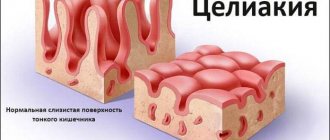Blood test total protein
Proteins are a substance that predominates in the composition of the dense residue of blood serum. They are the main building material of all cells and tissues in the body. Proteins also make up enzymes, hormones, antibodies, and blood clotting factors. Proteins are also responsible for transporting hormones, vitamins and minerals, fat-like substances, as well as other metabolic components in the blood. Another important role of proteins is the transport of all of these substances into cells. The amount of proteins in the blood serum directly affects the osmotic pressure of the blood, which is responsible for the balance between the water content in the body tissues and inside the vascular bed. Osmotic pressure is also responsible for maintaining tissue elasticity. Proteins play a key role in ensuring acid-base balance in the body. Proteins are also the main source of energy during malnutrition or starvation.
Serum proteins are of two types: albumins and globulins. The former are synthesized by the liver from incoming food. Albumin concentration affects the level of osmotic pressure. Globulins are the basis of immunity, ensuring normal blood clotting. Globulins are also contained in enzymes, hormones, and carrier proteins of various biochemical compounds.
Several physiological conditions of a non-pathological nature, as well as a number of diseases, can cause changes in protein levels in the blood. There are two types of deviation in blood protein levels: relative and absolute.
Explanation of the analysis for Total protein
Determination of total protein in blood serum is used to diagnose diseases of the liver, kidneys, cancer, and nutritional disorders.
The normal level of total blood protein is 64–83 g/l.
Increased protein content occurs in acute and chronic infectious diseases, cancer pathology, blood diseases, and dehydration. A decrease in protein levels is most often caused by diseases of the liver, kidneys, intestines, starvation and some others.
Standard indicators
C reactive protein, the norm of which is universal for all categories of people, makes it possible to detect inflammatory processes in the human body. But it is impossible to make a diagnosis solely on the basis of a CRP blood test.
Today it is believed that the SRP norm is up to 5 mg/l. In newborns, the level can increase to 15 mg/l. When C reactive protein is elevated, suspicions arise about the development of an inflammatory or malignant process. This means that more accurate diagnostics using other methods is required.
But since the use of high-precision equipment makes it possible to determine the minimum amount of a substance in the blood, experts have begun to apply the concept of the basic value of CRP. It was introduced to assess the risks of damage to the heart and blood vessels, in cases where the development of any inflammatory processes is excluded. The norm for the basic indicator of the substance is less than 1 mg/l.
Total protein analysis
Total protein in the blood is the main indicator on which to focus when assessing amino acid metabolism in the human body. This analysis is never prescribed separately - it is always carried out in conjunction with other studies. Assessing the level of total protein in the blood is necessary for diagnosing a number of diseases: pathologies of the kidneys, liver, oncology, and various infections. This analysis is also prescribed to monitor the effectiveness of ongoing therapeutic measures. In order to conduct a quantitative analysis to determine total protein, a sample of the patient’s biological material is required - venous blood plasma. Normal levels of protein in the blood are from 65 to 85 g/l. The research will take no more than 1 day.
Total blood protein is a general indicator of the concentration of all organic proteins that circulate in the blood plasma. The main substances isolated during the study are albumins and globulins. Albumin is a substance produced by the liver. Its concentration is about 60% of the total amount of proteins present in the human body. Globulins are a substance that is formed in the liver, lymphocytes and plasma cells. The concentration of this protein is not a constant indicator, which depends on the rate of its production from amino acids. In turn, this speed is influenced by a number of factors.
If the body produces excessive amounts of protein, it is not retained in the body. Passing a long way through the entire body, the substance eventually ends up in the kidneys and is converted into uric acid, which leaves the body in urine and feces.
The main task of blood serum proteins is to organize correct homeostasis in the body. Protein is involved in almost all biochemical processes of the human body. Plasma proteins are responsible for maintaining the normal state of the blood. They directly affect the degree of blood fluidity. In addition, proteins perform a transport function - they carry various substances to human tissues and organs: lipids, pigments, hormones, fragments of drugs.
Proteins are also responsible for the correct functioning of the human immune system. The production of antibodies, immunoglobulins and other protective cells of the body directly depends on their concentration in the blood.
Assessing the level of total protein is one of the stages of complex biochemical screening. Using the results of this analysis, surgeons and resuscitators evaluate the effectiveness of intensive care for critically ill patients, and also monitor patients after various surgical interventions. Also, the results of this analysis are necessary in cardiology and nephrology. Using the data obtained, doctors can determine the cause of edema, as well as impaired renal excretory function.
C-reactive protein (CRP)
C-reactive protein (CRP) is the most important acute-phase response reagent from a pathogenetic and diagnostic point of view. This protein was discovered in 1930 by W. Tillet and T. Francis, who discovered that a protein appears in the serum of patients with acute infectious diseases that can bind to C-polysaccharides (Ca2+-binding) of the pneumococcal cell wall.
Typically, CRP appears in the blood much earlier than the appearance of antibodies. Along with 40 other proteins, it belongs to the so-called group of “acute phase” proteins. They include proteins of the blood coagulation system, complement factors, antiproteases, transport proteins and are important components of the body's first nonspecific line of defense
The synthesis of CRP occurs mainly in the liver - mainly by hepatocytes and, more moderately, can be synthesized by neurons, kidney cells, monocytes, lymphocytes and macrophages of the alveoli, and CRP is also synthesized by macrophages and smooth muscle cells located in atherosclerotic plaques. In small quantities, CRP can be secreted by activated normal killer cells, some subpopulations of mature T lymphocytes, as well as certain types of neurons under physiological conditions.
The main organs that remove CRP from the bloodstream are the kidneys and liver. In addition, during extensive inflammatory processes, significant uptake of CRP by “inflammatory” macrophages and neutrophils occurs, as well as its extracellular destruction by proteinases at the site of inflammation. It is known that the half-life of CRP from the bloodstream is normally 18-20 hours, while during extensive inflammatory processes it can decrease by 1.5-2 times.
The average values of CRP levels range from 0.5-1.5 mg/l, without specific gender differences, the presence of physiological pregnancy, but with a tendency to increase in older people. An increase in blood CRP ≥10 mg/l as a criterion of systemic inflammation in the body can be observed in many diseases such as: severe purulent-inflammatory infections, acute malaria, parasitic infestations, systemic forms of mycoses, necrosis, extensive surgical interventions and injuries, burns III and IV degree or extensive frostbite, chronic renal failure, preeclampsia, lymphogranulomatosis, many autoimmune diseases, metastatic malignant tumors, delocalized vasculitis of any origin. An increase in the level of CRP in the blood begins 6-12 hours after the manifestation of a pronounced inflammatory process and can double every 8 hours, and in case of sepsis in 1-2 days it can increase from trace amounts to 1-2 g/l. Moreover, the level of CRP, as a rule, directly correlates with the severity of tissue damage and the inflammatory response. A CRP concentration of up to 20 mg/l, determined 6-12 hours after the onset of the manifestation of an acute infectious disease, allows one to exclude a bacterial infection in favor of a viral one.
It is important to note that CRP, although sensitive, is a very nonspecific indicator of systemic inflammation, and its level increases under various conditions: increased physical activity, low physical activity, sleep disorders, chronic fatigue, high or low alcohol consumption, depression, oral contraceptives, hormone replacement therapy, cancer, etc. It has been noted that weight loss and increased physical activity lead to a decrease in the concentration of CRP.
Of all the acute phase proteins, CRP increases its concentration faster than other proteins and remains in this state longer than others. It is this property that has made SRB popular in diagnostics. Currently, there are two methods for determining CRP: low- and high-sensitivity. For the first method, the lower limit of normal is 10 mg/l. For the highly sensitive method, 10 mg/l is its upper limit, and the lower limit is 0.5 mg/l. There are various methods for determining high sensitive CRP (high sensitive - hsCRP): ELISA, FIA, turbidimetry, latexagglutination, immunodiffusion. The highly sensitive test is based on latex-enhanced immunoturbodimetry. This test is of independent importance for clinical practice due to the following properties: the concentration of CRP is quite stable due to the relatively long half-life; the determination method is standardized, WHO-certified standards and control materials are available; the results of determining CRP in fresh, stored and frozen plasma are practically the same; the determination method is simple and applicable when monitoring patients on an outpatient basis.
Tests for coronavirus
- Test for coronavirus
- Coronavirus test for organizations
- Testing for coronavirus at home
- Testing for coronavirus at home in 12 hours!
- Testing for coronavirus in Lyubertsy in 12 hours!
- Testing for coronavirus in Nekrasovka in 12 hours!
- Testing for coronavirus in Korolev in 12 hours!
- Test for coronavirus on the Sokol metro station
- Coronavirus test at Kolomenskaya metro station
- Coronavirus test at Voykovskaya metro station
- Test for coronavirus in Nekrasovka
- Coronavirus test in Korolev
- Test for coronavirus in Lyubertsy
- Test for coronavirus in Mytishchi
- Test for coronavirus at home Mytishchi
- Test for coronavirus at home Korolev
- Test for coronavirus at home Lyubertsy
- Test for coronavirus at home Nekrasovka
Any tests can be taken at clinics in the East Clinic network.
Reasons for the increase
When C reactive protein is elevated, there may be different reasons. Today they are divided into three main groups:
- Oncology.
- Inflammatory processes.
- Vascular pathologies.
The risks of developing certain diseases are assessed by the concentration of the substance in the blood:
- Less than 19 mg/l. This deviation is considered insignificant. Exceeding the norm can be triggered by any negative factor affecting the body. As a rule, in this case, analysis is required at a certain frequency. If constantly elevated CRP is detected, diagnostics are required to exclude autoimmune and oncological pathologies.
- 20-50 mg/l. Indicators always rise to this level with various viral infections.
- More than 100 mg/l. A bacterial infection can provoke a strong immune reaction in the body, against which serious diseases develop: pneumonia, salmonellosis, pyelonephritis, etc.
Daily protein intake
Experts are confident that it is important not only not to exceed your daily intake of protein (or protein), but also to distribute its intake evenly: you can eat about 40 g at a time without consequences. For an adult with a not too active lifestyle, the estimated daily intake is - 0.8 g of protein per 1 kg of weight. This is the amount that can be placed in approximately two palms.
Protein sources:
- meat;
- eggs;
- fish;
- nuts, seeds and legumes;
- dairy products.
In the stomach, protein foods are broken down into amino acids and then absorbed by the small intestine. The liver filters which amino acids are needed by the body and which should be excreted naturally through the kidneys. Protein biosynthesis is usually disrupted due to an unbalanced diet.
Causes of low blood protein
Low protein levels may be a sign of liver disease
In medical practice, such a pathology as a decrease in protein levels in the blood is called hypoproteinemia.
Its presence can signal some diseases and disorders occurring in the human body:
- hepatic cell failure, which developed against the background of acute and chronic liver pathologies
- improper and irrational nutrition in the absence of any pathologies affecting internal organs
- depletion of the human body, which is caused by long-term diseases and infectious-purulent inflammations
- various pathologies of pregnancy, for example, gestosis
- diseases of the endocrine system, that is, decreased thyroid function and hyperfunction of the adrenal glands
- HIV infection and various immunodeficiencies
- disruption of the pancreas with its enzymatic insufficiency
- diabetes mellitus with various complications
- severe form of anemia, malignant neoplasms and bleeding;
- accelerated excretion of protein from the body along with urine in severe kidney diseases and renal failure
- pathologies of the stomach and intestines in a chronic form, which are accompanied by disruption of the digestion process and absorption of protein components from food
A symptomatic decrease in the level of total protein in the human body can be expressed in the formation of tissue edema. Typically, this symptom is observed with a significant decrease in total protein, that is, below 50 g/l.
A decrease in protein concentration in the blood is always considered a dangerous signal, which indicates various pathological changes. The human body, which is in this state, becomes completely defenseless to the effects of various unfavorable factors and is not able to recover on its own.
There are (not) too many proteins
Protein is one of the most important nutrients on which the quality of the body as a whole depends. It helps restore tissue, transport oxygen throughout the body, regulate cellular metabolism, and recover from injuries and physical activity.
The amount of protein needed to maintain the body depends on several factors. Let's look at them in more detail.
Age
Everyone needs proteins, especially older people. As they age, they lose muscle mass, and this must be compensated for with nutrition: a third of the daily diet of people over 50 years old should come from proteins.
Lifestyle
The more often you play sports, the faster microtraumas appear in the muscles. For a quick recovery, you need to consume at least 200–250 grams of foods containing protein.
Weight
Men and women have different body weights, so the former, as a rule, are advised to lean heavily on proteins.
However, this does not mean that the latter should forget about them. So, summing up all the facts, we come to the following conclusion: a woman aged 28–35 years, who weighs approximately 60 kilograms and exercises 2–3 times a week, needs 70–118 grams of protein per day.
Related reading:What you need to know about the reverse diet











